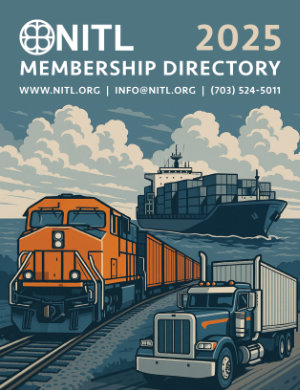BACKGROUND
On 22 June 2011, the Surface Transportation Board (STB or board) held a public hearing focusing on the state of competition in the freight rail industry, with particular emphasis on the so-called Class I (very large) railroads. The Class I lines testified that all was well and that they engaged in vigorous competition for business. But a host of shipper organizations, including the League, said just the opposite with respect to “captive shippers,” which are served by only one railroad. Given the geographic footprints of the major railroads, captive shippers have few if any opportunities to benefit from real head-to-head competition between Class I lines.
The STB then asked what shippers would suggest as a remedy. The League came back to the STB in July 2011 with an answer: competitive switching. In its simplest terms, if a shipper is truly “captive” and paying very high rates for rail service, and if there is a nearby facility where railcars could be transferred from one railroad to a competing railroad, then the shipper should be able to seek a competitive bid from the other railroad. The shipper would have to pay to have the railcars moved, and if the railroad could show that moving cars from one line to the other was unsafe or harmful to other customers, the shipper would be denied this remedy.
We explained that existing STB regulations have made it impossible for captive shippers to obtain competing bids. The 1980 federal law that deregulated the railroads (the Staggers Act) permits competitive switching; the agency had simply set the bar for relief too high.
LEAGUE FILES PETITION WITH STB
On 7 July 2011, the League filed a petition with the STB asking the agency to develop a new switching rule. In our petition, we proposed such a rule and provided a detailed analysis of its impact if adopted. Our analysis showed that competitive switching would have minimal impact on railroads, yet provide significant relief to captive shippers.
After receiving our petition, the STB initiated a formal rulemaking proceeding and placed it on their docket as Ex Parte 711 (EP 711). Five years later, on 27 July 2016, the STB issued a response to our petition.
STB RESPONDS TO LEAGUE’S PETITION
The STB’s response granted the League a partial victory by proposing a substantial revision of its reciprocal switching rules. The board agreed with us that the lack of reciprocal switching requests over the years was evidence that its existing rules were not adequately serving shippers’ interests. The board also noted that the financial health of the railroad industry had improved significantly since the existing rules were adopted, to the point that requiring shippers to prove “competitive abuse” by railroads to obtain a switching remedy was no longer justified.
The STB’s response laid out two proposed paths to a competitive switching remedy. The first path would require the proposed switching to “be practicable and in the public interest,” while the second path would require the proposed switching to be “necessary to provide competitive rail service.” Both paths would apply only to Class I railroads.
The STB’s response also proposed two alternative methods the board would use to set the access price that would be paid by the new competing railroad to the incumbent railroad (if the two railroads could not reach agreement).
LEAGUE COMMENTS ON PROPOSED STB RULE
On 26 October 2016, the League joined with nine other groups in filing comments with the STB on its proposed rule. In the comments, the 10 groups—known collectively as the Shipper Coalition for Railroad Competition—made the following arguments:
- The STB has the legal authority to make the changes it is proposing to the existing competitive switching (reciprocal switching) regulations;
- The STB’s proposed case-by-case approach is sound but should be modified to make switching proceedings less costly, complex, and lengthy;
- Short line railroads should be eligible to serve as competing carriers;
- The STB needs to better define what constitutes a “reasonable distance” from a working interchange and explain how it will apply the market dominance test;
- The STB should not consider lost contribution in establishing an access price; and
- The STB should clarify the standard it will use in determining whether to reopen an order for reciprocal switching.
LEAGUE SUBMITS REPLY COMMENTS TO STB
On 13 January 2017, the League and the other members of the Shipper Coalition for Railroad Competition submitted comments to the STB replying to the 1,000-plus pages of comments and other materials filed by the railroads in October.
NEXT STEPS
The League is currently arranging ex parte meetings with STB members and staff, which are scheduled to begin on January 30. A final ruling by the board is expected to be announced later this year.


